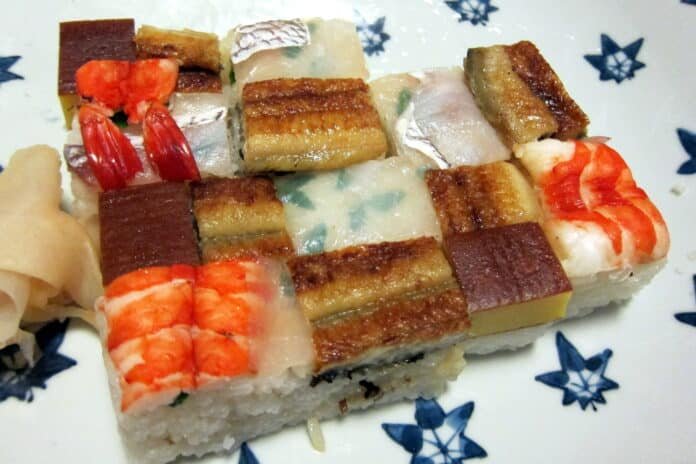
No trip to Japan is complete without sampling some sushi. However, we are often short of time on our travels. Wouldn’t it be great if you sushi was neatly boxed up for you?
Well, its funny you should say that…
What is Hakozushi?
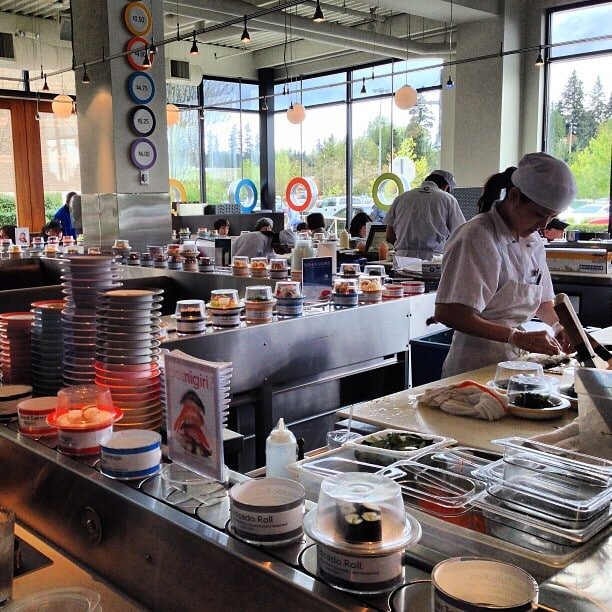
One of the most endearing things about food and drink culture in Japan is the way in which presentation and aesthetics are often considered just as important as taste and aroma.
Nowhere is this more apparent than in the case of Hakozushi.
In Japanese “Hako” means box, and “zushi” is just another way of writing sushi. So, as one would expect, Hakozushi are fresh pieces of sushi, pressed into perfect cubic shapes and served in an elegant presentation box. The process for preparing Hakozushi is quite labour intensive and time consuming, so unsurprisingly, it is becoming something of a rareity these days.
However, there are still plenty of places out there offering a huge variety of styles and flavours in their hakozushi. However, one thing that never changes is the shape, size and uniformity of each individual piece.
Varieties of Hakozushi
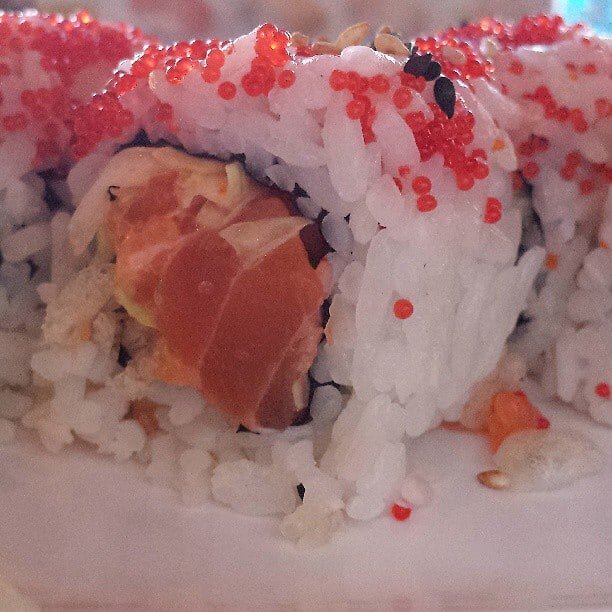
Much along the same lines as regular sushi, such as the kind one would find at a “kaitenzushi” (rotating conveyor belt sushi) restaurant, the majority of Hakozushi utilizes fish. The likes of tuna, mackerel, salmon and squid all feature prominently. However, as is the case with regular sushi, there’s also plenty of other, non-aquatic options too.
Cucumber, Peppers, steamed omelete and a host of meat-free options are also available.
However, as I said previously, the challenge in making Hakozushi lies in maintaining a consistent size and shape, regardless of the ingredients being used. When you consider how much more maleable the likes of tuna and salmon are than vegetables like cucumber and carrot, its a lot more difficult than it sounds.
Where to buy Hakozushi
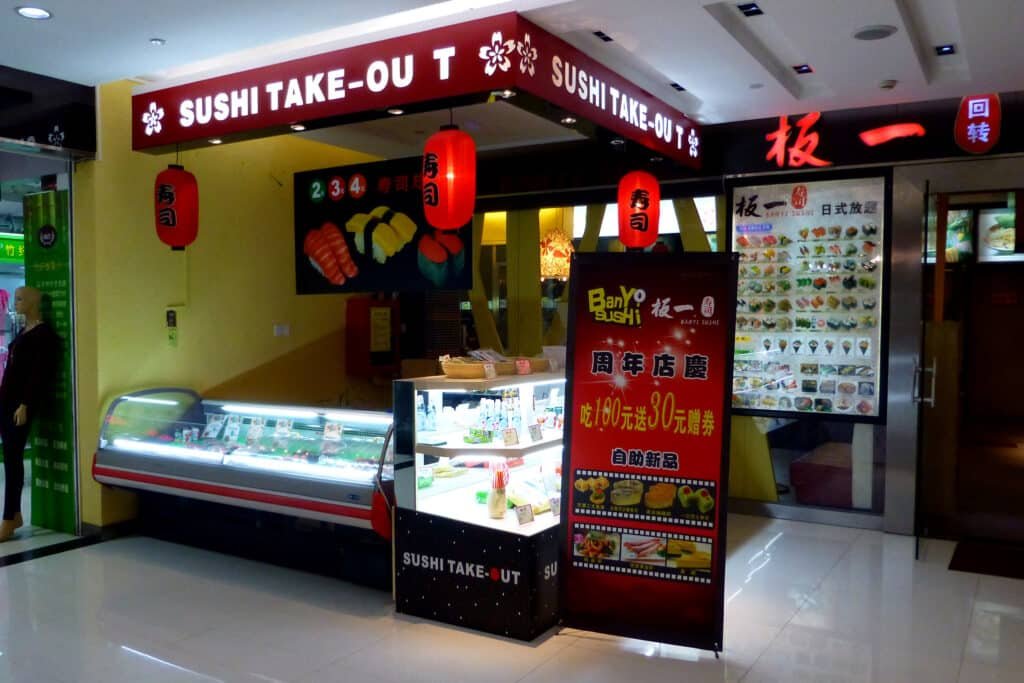
When making Hakozushi, a huge emphasis is placed on presentation, but taste and texture quality are hugely important too.
To that end, only the highest quality vinegar-treated rice and finest cuts of fish, meat and vegetables are used. This ensures your Hakozushi will be consistently delicious when you try it. However, this also means it can be a bit pricey, especially if you’re going to eat in at a restaurant.
Probably the best known place to try Hakozushi is at Yoshino Sushi. There are three branches of Yoshino Sushi across Osaka. Each one is based in a department store, near to one of the major train stations, for ease of access.
Yoshino sushi has branches in Takashimaya Department store, next to Nankai Namba Station, at the Hanshin Department Store in Umeda, a two minute walk from JR Osaka Station, and finally at Shin Osaka Station’s own internal department store food court.
In addition to having a reputation as some of the best sushi in all of Japan, Yoshino Sushi also offers all of their Hakozushi sets in a beautifully ornate Cypress wood box, making them excellent gifts for local friends too.
How to make Hakozushi
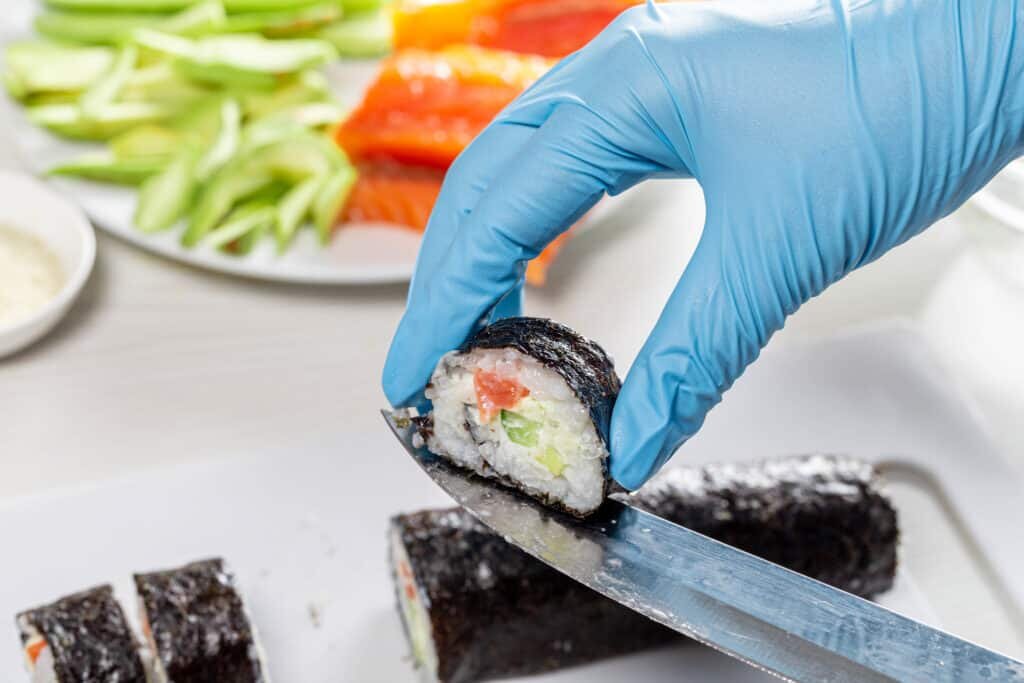
The process for making Hakozushi at home is, for the most part, the same as making regular sushi at home. The only difference is that you will have to try your best to form your sushi into cubes once you’ve finished preparing them.
This recipe is made using some of my favourite fish and vegetables for sushi, but feel free to swap them out for whatever meets with your personal tastes.
Here are the ingredients you will need:
6 sheets of nori seaweed (more if you’re making for a large group)
300 grams of prepared sushi rice. (boil the rice and then marinate it in rice vinegar overnight.)
100 grams of salmon
100 grams of tuna
3 teaspoons of wasabi paste
Begin by cutting your fish into square slices. Try to keep them as equilateral as possible.
Cut your nori into strips, the same width as the cuts of fish, but two and half times the length.
Take a clump of rice, fold it into a cube shape approximately double the width, but the same length and breadth, as the cuts of fish. Rub a half a teaspoon of wasabi into the rice, and then use this to stick the rice to the bottom of your cuts of fish. Wrap your strips of seaweed around each cut of fish and rice, until the bond together.
If all goes well, you should be left with 6 or 12 pieces of sushi, and hopefuly they are resonably box-shaped!
The difference between homemade sushi and the stuff you buy in Osaka is huge though. At the end of the day, there’s a reason why these guys spend years training to become sushi chefs.
So, if at all possible, please come to Osaka and sample the good stuff for yourself!




















